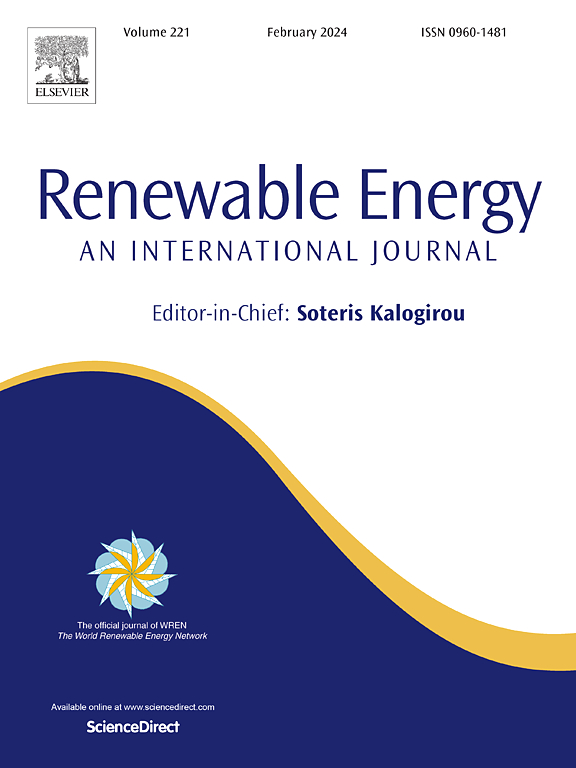Multi-objective optimization of an integrated ocean thermal energy conversion system
IF 9.1
1区 工程技术
Q1 ENERGY & FUELS
引用次数: 0
Abstract
Low carbon, stability, and great capacity are the advantages of ocean thermal energy (OTE). Inadequate thermodynamics and exergoeconomic performances of ocean thermal energy power generation, however, impede its large-scaled commercial application. In that case, an integrated power generation, refrigeration, and desalination ocean thermal energy conversion (OTEC) system, where the deep cold seawater is reused, has been proposed to simultaneously produce the aforementioned diverse materials to cater the energy demands of remote tropical islands. Further, a reference point-based fast nondominated sorting genetic algorithm III (NSGA-III) is employed where the exergetic efficiency and levelized cost of energy (LCoE) are selected as the objective functions to obtain the optimal thermodynamics and exergoeconomic performances. The results display that a net output power of 4.36 kW, refrigeration capacity of 67.22 kW, and freshwater production of 13.31 t/d can be achieved when the flow rate of power subsystem is 1.0 kg/s. Moreover, compared to the single OTEC plant with an LCoE of 3.56 $/kWh, the integrated system's LCoE is only 0.31 $/kWh. Furthermore, the optimization result indicates that the ranges of the exergetic efficiency and LCoE are 10.93 %–40.56 %, and 0.091 $/(kWh) to 0.443 $/(kWh), respectively. Finally, decision-makers can choose any solution on the pareto frontier as operation values depending on specific preferences and criteria.
综合海洋热能转换系统的多目标优化
低碳、稳定、容量大是海洋热能的优势。然而,海洋热能发电的热力学性能和燃烧经济性不足,阻碍了其大规模的商业应用。在这种情况下,已经提出了一个综合发电,制冷和脱盐海洋热能转换(OTEC)系统,其中深冷海水被重复利用,同时生产上述各种材料,以满足偏远热带岛屿的能源需求。进一步,采用基于参考点的快速非支配排序遗传算法III (NSGA-III),以火用效率和平准化能量成本(LCoE)为目标函数,获得最优的热力学和火用经济性能。结果表明,当功率子系统流量为1.0 kg/s时,可实现净输出功率4.36 kW,制冷量67.22 kW,淡水产量13.31 t/d。此外,与单个OTEC电厂的LCoE为3.56美元/千瓦时相比,集成系统的LCoE仅为0.31美元/千瓦时。优化结果表明,其有效效率范围为10.93% ~ 40.56%,LCoE范围为0.091 ~ 0.443美元/(kWh)。最后,决策者可以根据特定的偏好和标准选择帕累托边界上的任意解作为操作值。
本文章由计算机程序翻译,如有差异,请以英文原文为准。
求助全文
约1分钟内获得全文
求助全文
来源期刊

Renewable Energy
工程技术-能源与燃料
CiteScore
18.40
自引率
9.20%
发文量
1955
审稿时长
6.6 months
期刊介绍:
Renewable Energy journal is dedicated to advancing knowledge and disseminating insights on various topics and technologies within renewable energy systems and components. Our mission is to support researchers, engineers, economists, manufacturers, NGOs, associations, and societies in staying updated on new developments in their respective fields and applying alternative energy solutions to current practices.
As an international, multidisciplinary journal in renewable energy engineering and research, we strive to be a premier peer-reviewed platform and a trusted source of original research and reviews in the field of renewable energy. Join us in our endeavor to drive innovation and progress in sustainable energy solutions.
 求助内容:
求助内容: 应助结果提醒方式:
应助结果提醒方式:


